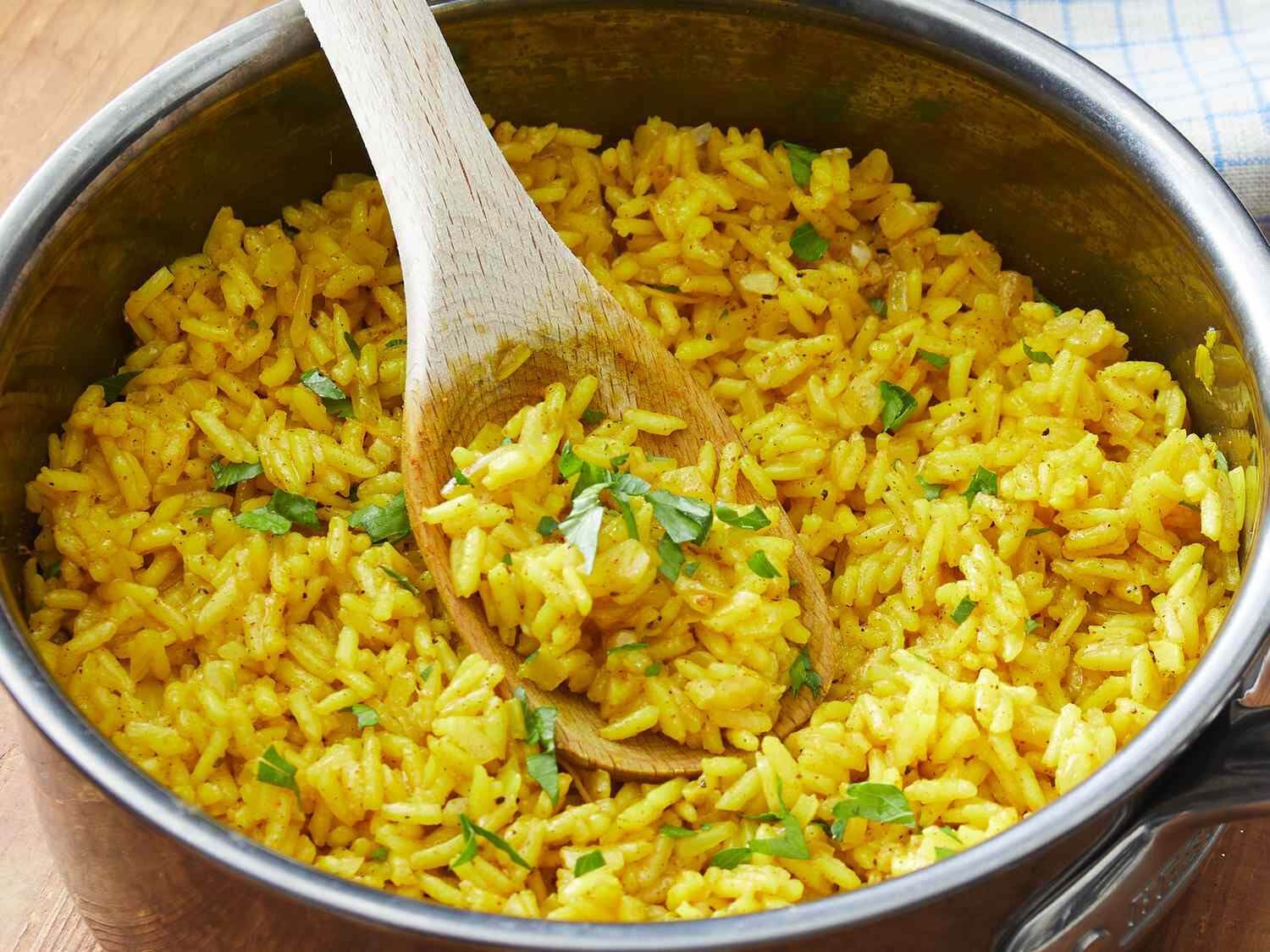
Yellow rice is a delicious and versatile dish that is enjoyed by many cultures around the world. Whether you call it arroz amarillo, nasi kuning, or simply yellow rice, this fragrant and flavorful dish is a staple in many cuisines. But beyond its incredible taste, yellow rice also offers a range of nutrition benefits that make it a smart choice for a balanced and healthy diet.
In this article, we will explore 11 yellow rice nutrition facts that highlight the reasons why this vibrant dish should be a regular part of your meal planning. From its rich source of essential nutrients to its potential health benefits, you’ll discover why yellow rice is not only a delicious addition to your plate but also a great way to support your overall well-being.
Key Takeaways:
- Yellow rice is a nutritious source of energy, B vitamins, and essential minerals. It’s gluten-free, high in fiber, and low in fat, making it a healthy and versatile addition to any diet.
- Cooking with yellow rice is easy and fun! It enhances mood, promotes satiety, and can be used in a variety of delicious recipes. Enjoy its rich flavor, color, and health benefits.
Rich in Carbohydrates
Yellow rice is a carbohydrate-rich food that provides your body with the energy it needs to function properly. It contains complex carbohydrates that are slowly digested, providing a steady release of energy.
Good Source of B Vitamins
Yellow rice is a good source of B vitamins, including thiamin (B1), riboflavin (B2), niacin (B3), and folate (B9). These vitamins play a crucial role in metabolism and overall health.
Contains Essential Minerals
Yellow rice is packed with essential minerals such as iron, magnesium, and zinc. These minerals are vital for various bodily functions, including the production of red blood cells and maintaining a healthy immune system.
High in Fiber
Yellow rice is a good source of dietary fiber. Fiber is essential for maintaining a healthy digestive system, promoting regular bowel movements, and preventing constipation.
Gluten-Free
Yellow rice is naturally gluten-free, making it an excellent choice for individuals with gluten intolerance or celiac disease. It can be enjoyed as a staple in gluten-free diets.
Contains Antioxidants
Yellow rice contains antioxidants like beta-carotene, which gives it its characteristic yellow color. Antioxidants help protect the body against damage from harmful free radicals.
Low in Fat
Yellow rice is a low-fat food option, making it a healthy choice for those watching their fat intake. It can be enjoyed as part of a balanced diet to support weight management.
Provides Energy and Satiety
Yellow rice provides a good source of energy and helps promote feelings of satiety, which can be beneficial for weight control and overall wellbeing.
Enhances Mood
Consuming yellow rice may help enhance mood due to its content of B vitamins, which play a role in the production of neurotransmitters that regulate mood and emotions.
Versatile in Recipes
Yellow rice is a versatile ingredient that can be used in various recipes, from traditional rice dishes to creative fusion recipes. It adds flavor, color, and texture to your culinary creations.
Easy to Cook
Yellow rice is easy to cook, requiring minimal preparation time. Whether you use a rice cooker, stovetop, or instant pot, you can enjoy this nutritious and flavorful rice in no time.
Conclusion
Yellow rice is not only a delicious and vibrant dish, but it also offers numerous health benefits. It is rich in essential nutrients like carbohydrates, vitamins, and minerals, making it a nutritious addition to your diet. Whether you’re looking to boost your energy levels, support digestion, or promote heart health, yellow rice can be a great choice. Additionally, it is gluten-free and suitable for individuals with dietary restrictions. With its enticing aroma and flavorful taste, yellow rice can be enjoyed as a standalone dish or as a side to complement a variety of savory dishes. So, why not incorporate this nutritious and delicious rice into your next meal?
FAQs
1. Is yellow rice healthy?
Yes, yellow rice is healthy. It is packed with essential nutrients like carbohydrates, vitamins, and minerals, providing you with energy and supporting overall health.
2. Is yellow rice gluten-free?
Yes, yellow rice is naturally gluten-free. It makes for a great option for individuals with gluten intolerance or celiac disease.
3. Can yellow rice help with digestion?
Yes, yellow rice can aid in digestion. It contains dietary fiber, which promotes a healthy digestive system and helps prevent constipation.
4. Does yellow rice contribute to heart health?
Yellow rice can contribute to heart health as it is low in fat and cholesterol-free. Its combination of carbohydrates and nutrients like potassium can help maintain a healthy cardiovascular system.
5. How can I incorporate yellow rice into my diet?
Yellow rice can be enjoyed as a standalone dish or as a side to accompany various main courses. You can serve it with grilled chicken, seafood, or vegetables for a complete and flavorful meal.
Was this page helpful?
Our commitment to delivering trustworthy and engaging content is at the heart of what we do. Each fact on our site is contributed by real users like you, bringing a wealth of diverse insights and information. To ensure the highest standards of accuracy and reliability, our dedicated editors meticulously review each submission. This process guarantees that the facts we share are not only fascinating but also credible. Trust in our commitment to quality and authenticity as you explore and learn with us.
